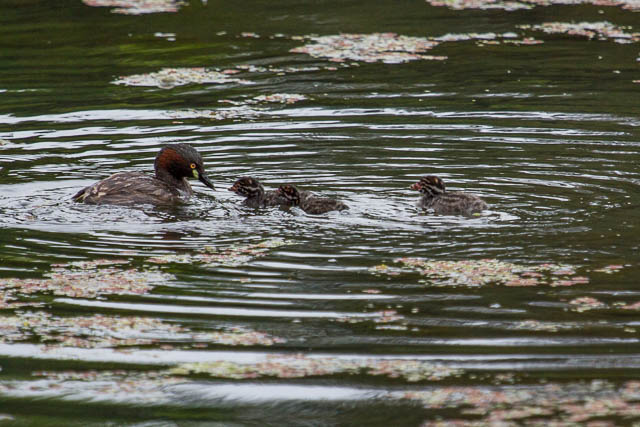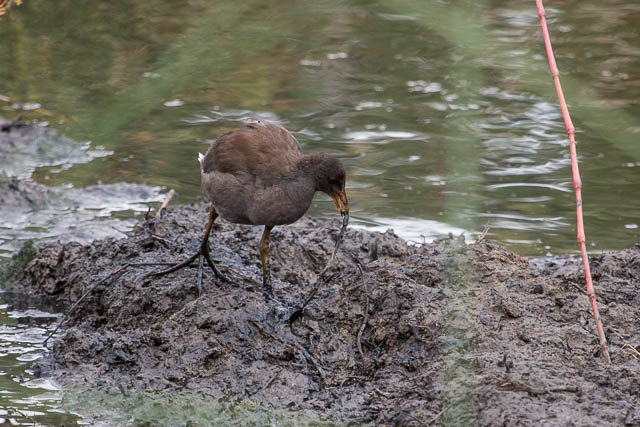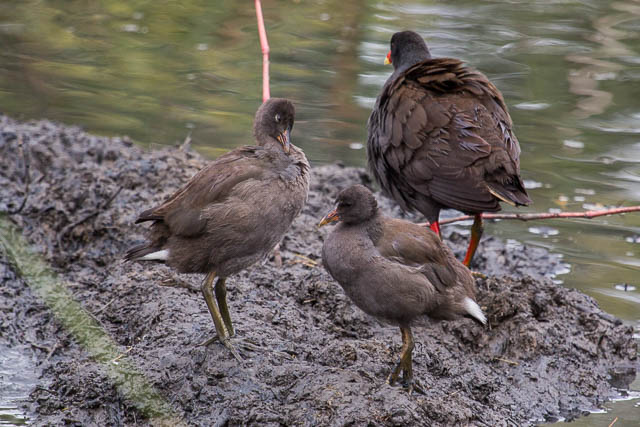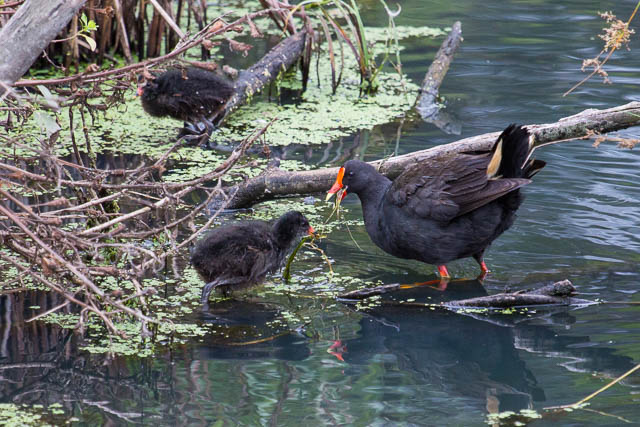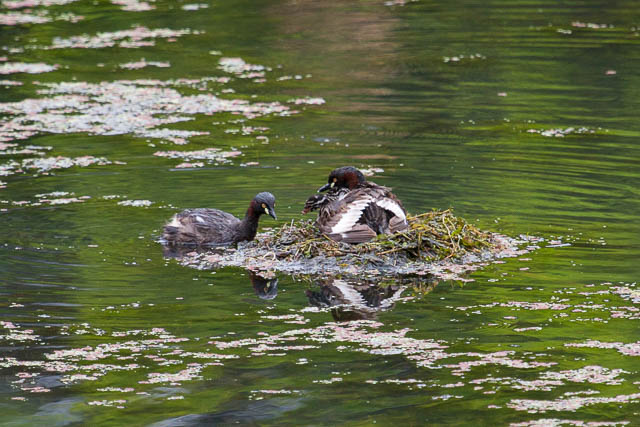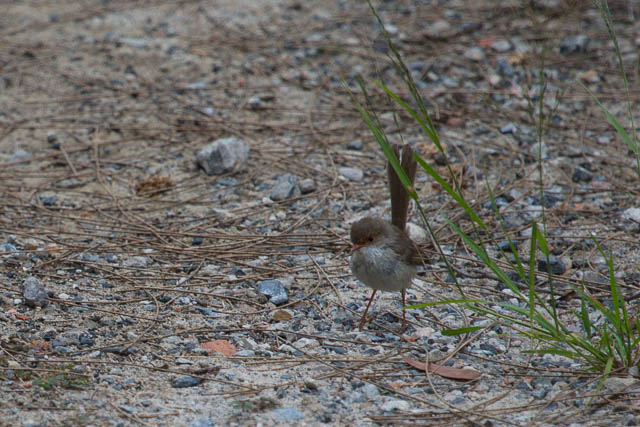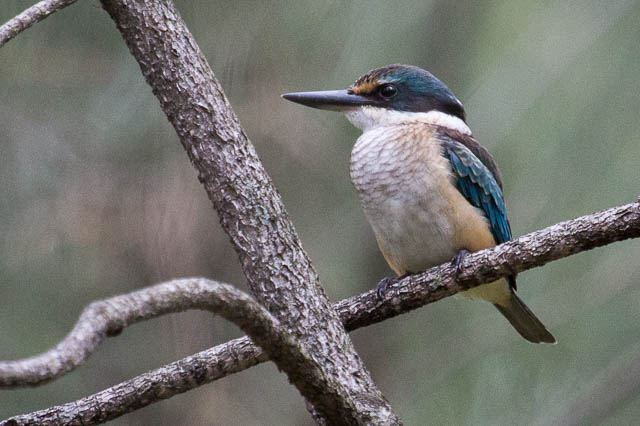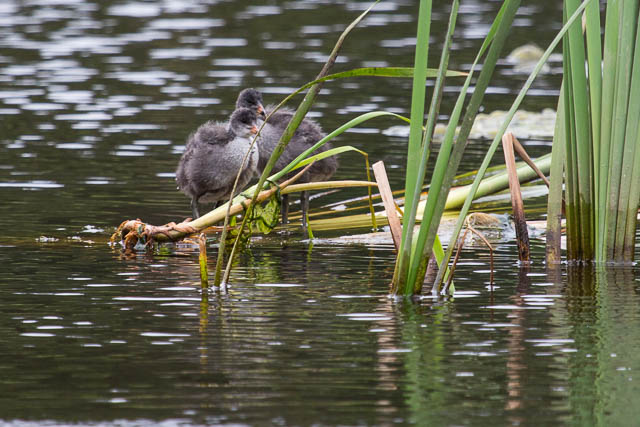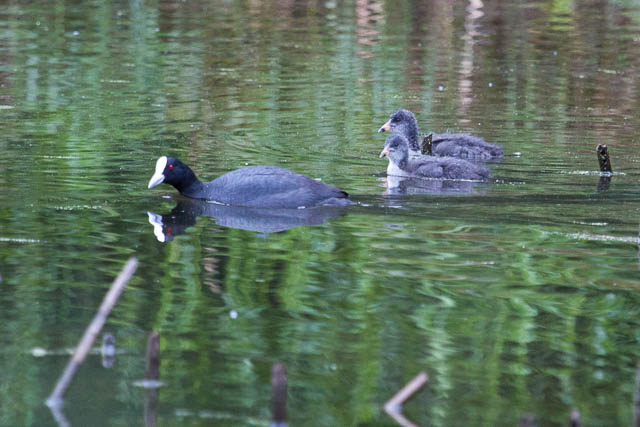I spent a very pleasant afternoon at the Cup and Saucer Creek Wetlands and then at the Tempe Wetlands photographing the birds.
On a previous visit I had thought I had seen a kingfisher. Meanwhile I had received an email from a local birder, Andrew Taylor, saying he had spotted the kingfisher too and also saying it was worth looking for some baby grebes at Tempe.
I first visited Cup and Saucer Creek. The middle pond was now filled up with water and back to its normal level. The middle pool always seems to have the most birds in it – and there were lots of chicks – mainly moorhens.
The I cycled down to Tempe and spent a rewarding few hours wandering around with my camera.
I soon spotted the baby grebes. They were swimming in the middle pond with one of their parents. The a baby birds were very small and it was hard to get good photos of them. The parent then directed the birds back to their nest – where the other parent was. This was a floating “island” – and it was not very big. The baby birds climbed up and disappeared under the other parent’s wing. Occasionally when the first parent swam close, one or two of the chicks would stick their heads out after food. it was interesting to watch. These baby birds have quite remarkable coloured patterns on their downy feathers. I will have to try again for some more photos – but taken closer, before they get too big.
I then moved further along the track – to the north most pool. It was here that I spotted the kingfisher again sitting in a tree above the track. This time it stayed still long enough for some photos.
Later when I went back to the middle pond, I got my binoculars out to look for the grebe chicks again. I spotted one by itself. Its parents were no where near. The baby bird did not appear to be worrying – perhaps it did not realise its danger? Moving along the pond I spotted the other grebe chicks and both parents swimming around. The young birds would swim close to one of the parents, and then the parent would dive underwater. Then the chicks would swim around randomly until the parent re-surfaced – and then they would make straight for the parent and swim close, until the parent dived again. Interesting to watch. After fifteen minutes or so, one of the adult grebes started swimming back to their nest with the check forming a flotilla behind. When they got close – the chick that had been separated swam at great speed to rejoin them.
I finished my visit off with some photography at the south most pond – looking at ducks and some coots with their chicks.
More photos from the visit are online here.

